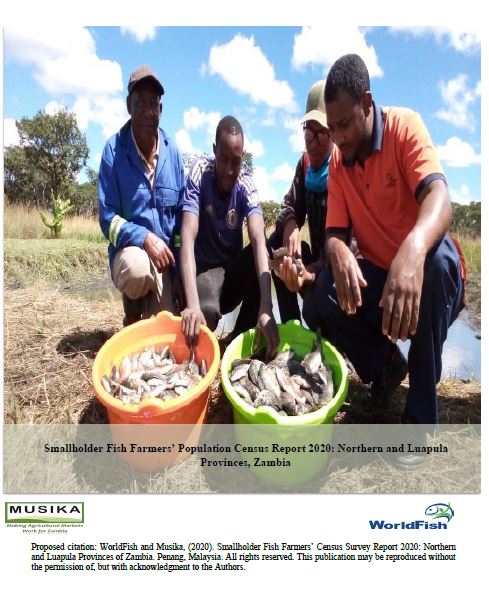
The main objective of the census was to understand the smallholder fish farmers’ landscape, especially women and youth. It provided a baseline data for the Aquaculture technical, vocational, and entrepreneurship training for improved private sector and smallholder skills project implemented by WorldFish in partnership with Musika in Northern and Luapula Province. The aquaculture value chain development goal of the project is to increase the number of human resources working for the private sector and the number of smallholder commercial fish farmers with enhanced aquaculture knowledge and up-to-date practical skills to help sustainably grow the sector and make it more inclusive.
The census collected data on (i) the demographic characteristics of the smallholder farmers; (ii) fish farming background; (iii) smallholder resources and fish species cultured; (iv) gender, youth and division of roles in fish farming; (v) access to input and output markets; (vi) production constraints and opportunities; and Global Positioning System (GPS) at the farmers’ household. There was a total of 2,341 smallholder farmers with Northern Province having the highest number of farmers at 61.0 percent (1,427). Of the total number of farmers in the two Provinces, 72.1 percent were actively involved in fish farming and 27.9 percent had abandoned fish farming at the time of the census. Males made up the highest percentage of fish farmers in the two provinces (86.0 percent). The largest percentage (60.8 percent) of smallholder farmers were mature adults in the ages 36 to 64 years). Youths (35 years and below) only made up 29.8 percent share of the smallholder farmers. The least were the elderly population (65 years and above) at 9.5 percent.
